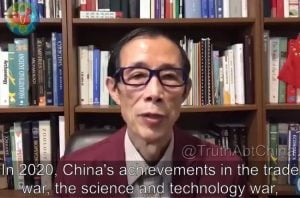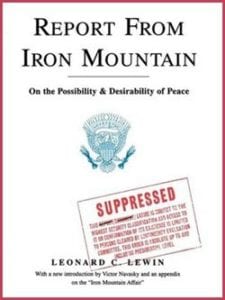A research institute that performs research and advocacy concerning topics such as social policy, political strategy, economics, military, technology, and culture. Most think tanks are non-governmental organizations, but some are semi-autonomous agencies within government or are associated with particular political parties or businesses. Think-tank funding often includes a combination of millionaire donations and individual contributions, with many also accepting government grants. Many think tanks are organized as non-profit.
The term denotes a group of people who are paid to do nothing but read, discuss, think, and write, usually to address and redress a matter of vital importance to humanity. You can think of a think tank as a research university blessed with a complete absence of students and where, as a consequence, none of its professors has to teach—all they have to do is research, research, research. At last count, the United States had 1,984 (as of Sept 7, 2021) think tanks—nearly a third of the world’s total. American think tanks are constantly researching solutions to a variety of the world’s issues, and then arguing, advocating, and lobbying for policy changes at local, state, and federal levels.
There has been remarkable growth in the number of think-tanks over the past century. In the 1920s, there were a handful. In the 1950s, there were a hundred or so mainly clustered in Western cities. Now, there are over 7,800 located across the world. A series of anniversaries marking the centenaries for some of the original institutions in the United States and the United Kingdom, coinciding with increasing turbulence in international affairs, makes this an apt time to review their role in the 21st century.
They began as ‘study groups’ which brought together academics and government officials to discuss policy issues within a confidential setting—often under the Chatham House Rule. They also hosted lectures, reviewed research papers and reports and kept extensive libraries. But their work focused on influencing specific individuals and communities, rather than the wider public, using a ‘rifle not a shotgun approach’.
Their mission was driven by a commitment to globalism. This encompassed both the Woodrow Wilson brand of internationalism — as was the case for the Carnegie Endowment for International Peace (1910) and the Council of Foreign Relations (1921) — and the liberal imperialism of the Royal Institute of International Affairs at Chatham House (1920).
They purported to believe that intergovernmental organizations, like the League of Nations, were essential to sustaining peace beyond the post-war period, however the true design has always been world domination. These original think tanks were all opposed to Nationalism.
The same individuals in these think tanks never serve as politicians, however they are always put in unelected positions of power around leaders such as Presidents, Prime Ministers, etc. Edward Mandell House, John Service, Alger Hiss, Henry Kissinger, and many others are examples of globalists who serve the interests of globalism and the New World Order that were trusted advisors to Presidents and top officials.
Following WWII in 1950, Senator Joseph McCarthy, at a speech in Wheeling, West Virginia said:
“Six years ago, at the time of the first conference to map out the peace — Dumbarton Oaks — there was within the Soviet orbit 180,000,000 people. Lined up on the anti-totalitarian side there were in the world at that time roughly 1,625,000,000 people. Today, only 6 years later, there are 800,000,000 people under the absolute domination of Soviet Russia–an increase of over 400 percent. On our side, the figure has shrunk to around 500,000,000. In other words, in less than 6 years the odds have changed from 9 to 1 in our favor to 8 to 5 against us (communist / anti-communist). This indicates the swiftness of the tempo of Communist victories and American defeats in the cold war. As one of our outstanding historical figures once said, “When a great democracy is destroyed, it will not be because of enemies from without, but rather because of enemies from within.”
McCarthy was proven right about communist infiltration of the US when the Venona Intercepts were finally brought to light following a FOIA request and delayed release. In addition, the Vassiliev papers proved him right again, both of which were brought to light in the 1990’s, yet still today McCarthy is demonized as a crazy witch hunter. A well organized smear campaign, directed by the think tanks and their minions worked and continues to work like a charm.
Following WWII, several of the think-tanks of the time played a key role in designing the UN and other post-war organizations. The UN was organized and led my communists in spite of the fact that it was mostly funded and organized in the USA. With the UN in control of the Korean and Vietnam wars, the communist opposition to Western Allies were well aware of every move General MacArthur and other military leaders made before they made them to the point that MacArthur finally quit reporting his plans, as required by the UN, which led to his first wins in the war. They were also handicapped by unfair playing rules set by the UN.
As the Cold War unfolded, more think-tanks began sprouting in European capitals and in cities across the United States. Like the early think-tanks, these think-tanks provided a space for policymakers to debate policy issues and a platform for so-called experts the lies necessary to promote and advance globalist agendas. Superpower competition, and decolonization, led to the creation of think-tanks around the world although these organizations operated more as extensions of government diplomacy — relying on national government funding and maintaining close relationships with incumbent regimes.
Think-tanks began to evolve from informal ‘study groups’ to centers of expertise with full-time staff. Following the Cold War, the areas of research for most think-tanks centered on the competition between the West and the Soviet Union, nuclear deterrence and energy security. They began to develop different tactics to enhance their relevance to, and impact on, policy issues. Their research began to look beyond the short-term horizon of incumbent regimes, towards a medium-term one, to increase their relevance to present and future governments.
The political environment in Washington provided an ideal ecosystem for US think-tanks to dominate the sector post-Cold War— much as US power dominated international affairs. The division of powers between the executive and legislative branches of government, the revolving door through which some 4,000 political appointees were admitted to each new presidential administration, the size and wealth of the US economy and the international impact of the sitting administration’s decisions all provided the ideal ecosystem for US think-tanks to raise funds — from private foundations, companies and individuals as well as through grants from domestic and foreign government agencies — and thereby to dominate the sector throughout this period.
Globalization has radically changed the landscape for think-tanks over the last three decades. The shift in the power balance from the West to ‘the rest’ (by deign) has meant that US think-tanks, in particular, have expanded in size as the demand to understand this process has grown. Non-US organizations, too, seek to understand how US policy might affect their fates. New and expanded top-down programs on global health, climate change, cyber security and international finance reflect the growing level of UN international control that has come with globalization.
Many of the worlds think tanks are organized and funded by globalists with the goal of a new world order and their research and thought process is regarding how to deceive and manipulate the worlds population into believing lies that will steer them towards accepting it. Most of these believe the population is too large to control so they aim to design ways to depopulate the world. This requires the use of propaganda, indoctrination, and brainwashing techniques which they use to steer us to do things by trusting bureaucratic authority whom they often have under their control.
US think tanks have ‘gone global’ opening offices in capitals around the world. British think tanks based in London have also leveraged the city’s status as a ‘global hub’. Meanwhile Brussels has capitalized on the enlargement of the European Union, with its access to a wealthy single market of over 500 million people, to increase its influence. Geneva, too, is beginning to leverage its role on the world stage since it is host to the World Trade Organization and several of the UN’s most important agencies.
Outside of the West, China has led the way in establishing new think-tanks and currently has the largest number with 512 — only second to the US which has 1,984. Australia, Argentina, Brazil, India, Indonesia, Mexico and Singapore have also been able to develop internationally recognized institutions due to their expanding global connections and sub-Saharan Africa, south-east Asia and Latin America are also growing their voices on policy issues on the world stage.
However, this diversification in the think-tank arena has not always followed the Western model: the evolution of non-Western think tanks reflects their respective domestic cultures. For example, given the centralization of political power in China, Russia and the Middle East, the notion of institutional independence for think-tanks in these countries is arguably constrained.
Today, think-tanks are facing three challenges.
- First, technology has radically altered the way policy is made.
- Second, the resistance to successive governments in Washington and across Europe to adapt their economies to globalization due to backlash against the elite-led policymaking with which think-tanks have been associated with.
- Demands for transparency in their dark funding are compromising their credibility.
A 2014 NY Times investigation revealed that:
More than a dozen prominent Washington research groups have received tens of millions of dollars from foreign governments in recent years while pushing United States government officials to adopt policies that often reflect the donors’ priorities.
The money is increasingly transforming the once-staid think-tank world into a muscular arm of foreign governments’ lobbying in Washington. And it has set off troubling questions about intellectual freedom: Some scholars say they have been pressured to reach conclusions friendly to the government financing the research.
Here is a list of some of the most influential think tanks:
- 21st Century Council
- Acton Institute
- American Foreign Policy Council
- Aspen Institute
- Atlantik-Brücke
- Atlantic Council
- Atlas Network
- Australian Strategic Policy Institute
- Belfer Center for Science and International Affairs
- Brennan Center for Justice
- Brookings Institution
- Carnegie Endowment
- Cato Institute
- Center for American Progress
- Center for Strategic and International Studies
- Chatham House
- Council on Foreign Relations
- Earth Institute
- Frankfurt School
- Freedom House
- George C. Marshall Institute
- Guttmacher Institute
- Heartland Institute
- Highlands Forum
- Henry L. Stimson Center
- Heritage Foundation
- Hoover Institution
- Human Rights Watch
- Kaiser Family Foundation
- Ludwig von Mises Institute
- National Security Commission on Artificial Intelligence
- Open Society Foundation
- Project for the New American Century (PNAC)
- RAND Corporation
- Tavistock Institute
- Vera Institute for Justice
- Wellington House
- World Economic Forum
- Young Global Leaders
Sources:
- Medium (modified by HH Editor)
Chronological History of Events Related to Think Tanks

Senior Member of CCP Think Tank Claims China Won Unprecedented Biological War Against the US in 2020





